Passive fire protection (PFP) is one of the most important, yet often overlooked, components of a building’s fire safety strategy. Unlike active systems such as alarms or sprinklers, passive fire products are built into the structure itself to contain fire, smoke, and heat buying precious time to evacuate and protect lives and property.
1. What Is Passive Fire Protection?
Passive fire protection involves the use of non-reactive building components that help stop or slow the spread of fire. These include fire-rated walls, floors, ceilings, and penetrations that have been sealed with certified fire-stopping materials. Common examples are:
- Fire-resistant sealants and acrylics
- Fire mortar and coatings
- Pipe wraps, collars, and closers
- FR boards and putty pads
These components work in harmony to maintain fire compartments and prevent fire from moving between rooms or floors.
2. Why Are Passive Fire Products Essential?
- Life Safety: They keep fire and smoke contained, ensuring escape routes stay safe.
- Structural Integrity: Fire-resistant materials protect load-bearing elements, reducing the risk of collapse.
- Compliance: Building regulations and fire safety codes require passive systems in most commercial and multi-dwelling buildings.
- Minimal Maintenance: Unlike mechanical systems, passive fire products don't rely on activation or moving parts.
- Enhanced Performance: Many also provide soundproofing and thermal insulation benefits.
3. How Do Passive and Active Fire Systems Work Together?
While passive systems contain the fire, active systems (like sprinklers) work to suppress it. Combined, they form a comprehensive fire safety solution. Passive systems buy time and create barriers, while active systems help extinguish or alert.
4. Types of Passive Fire Products You’ll Find at Premier Passive Fire Product:
- Astro PFP FR Acrylic (Foil & Cartridge)
- Astro PFP FR Graphite
- Astro PFP FR EX Mortar
- Astro PFP FR Coating
- Astro PFP FR Boards (Single & Pack of 5)
- Astro PFP FR Putty Pads and Cords
- Astro PFP Pipe Wraps and Closers
- Many more! Please see our product catalogue
Each product plays a role in sealing gaps, protecting service penetrations, and reinforcing the fire resistance of walls and floors.
5. Installation & Ongoing Compliance
Correct installation is key. Products must be fitted by competent professionals to meet certification standards. Annual inspections and maintenance such as checking seal integrity and updating fire stop systems after renovations are vital for long-term protection.
Conclusion
Passive fire products aren’t just building materials they’re life safety systems. Whether you're retrofitting a commercial unit or building new homes, integrating passive fire protection early ensures compliance, safety, and peace of mind.
Explore our range of certified fire stopping solutions at Premier Passive Fire Product, or speak with our technical team for project-specific advice.

